
Jeroen Cremers Soojin Kang Marianna Ignataki Sebastian Neeb Chuan Lun Wu KREATUR
Berlin 14 Sep – 17 Nov 2022
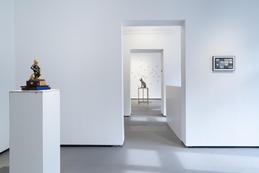
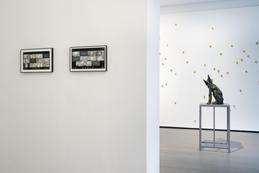
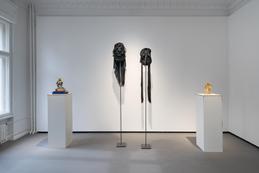
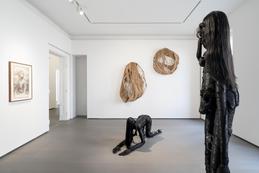
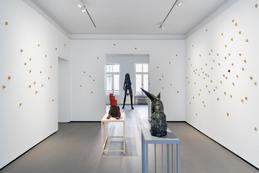
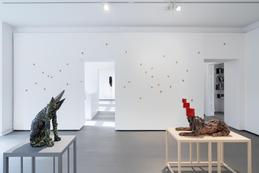
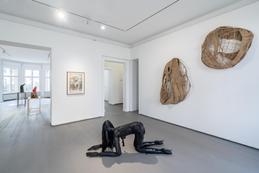
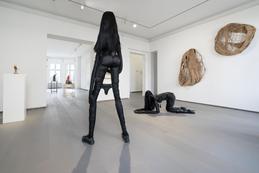
Is creature a term of abuse? What creatures are there? Are humans creatures? *
The term CREATURE is ambiguous and multi-layered. It is both positively connoted in connection with the divine story of creation (“we are all God’s creatures”), as well as being a term of contempt for all forms of life (“wretched, loathsome creature”). In recent times one can also find value-neutral uses of the term. For example, in the Swiss constitution reference is made to the “dignity of the creature”, where it serves as a synonym for all earthly animals. Finally, the term also serves as a designation for all imaginary beings, wherever man plays a role as creator.
The exhibition of the same name is dedicated to the ambiguity of the term creature, exploring it through five different artistic positions within the context of contemporary art.
The term CREATURE is ambiguous and multi-layered. It is both positively connoted in connection with the divine story of creation (“we are all God’s creatures”), as well as being a term of contempt for all forms of life (“wretched, loathsome creature”). In recent times one can also find value-neutral uses of the term. For example, in the Swiss constitution reference is made to the “dignity of the creature”, where it serves as a synonym for all earthly animals. Finally, the term also serves as a designation for all imaginary beings, wherever man plays a role as creator.
The exhibition of the same name is dedicated to the ambiguity of the term creature, exploring it through five different artistic positions within the context of contemporary art.
- Frequent Google search queries in connection with the term creature
— — —
SOOJIN KANG (b. 1978 in Seoul, South Korea) studied at Central St Martins in London until 2009.
She lives and works in Kulmbach.
Soojin Kang’s work places as much importance on that which exists as that which does not. Through her harnessing of the poetic effect found in the ‘interval’, the space in-between she creates a dynamic and compelling tension between inner and outer, positive and negative and hard and soft. Intensely organic in form, her works conjure up a wealth of associations of the natural world.
MARIANNA IGNATAKI (b. 1977 in Thessaloniki, Greece) studied at the Visual Arts at the School of Fine Arts of Saint-Etienne, France and Architecture at the Technische Universität in Vienna. She currently lives and works in Berlin.
Ignataki’s work ranges from minimalistic scenes and portraits to exaggerated, kitsch, Rococo inspired compositions.
It explores themes of identity and the perception of self, the other side; a dream that turns to nightmare, the attraction to terror, the fascination with carnival, the freedom and the ambiguous feelings provoked by the use of masks.
The works are mainly anthropocentric, with female or ambiguously-gendered protagonists that resemble witches, animals or hybrids. Often, an unspecified or even perversive eroticism is implied, one that does not concern sexuality in the sense of sexual act but the mental state of erotic desire; our instincts, or a hidden dark side.
JEROEN CREMERS (b. 1972 in Reuver, Netherlands) studied at the Maastricht Academy of Fine Arts and Design.
He currently lives and works in Berlin and Grasse, France.
Alienation and transformation are two concepts that spring to mind when looking at the work of Jeroen Cremers.
The sculptures can be recognised by their bodies, but in the place of the head, strange stacks of geometric forms have been placed. Cubes and pyramids dominate his sculptures. Shapes that refer to the past but also to science fiction, think for example of the black monolith from "2001 Space Odyssey".
His new more abstract works also refer to the body. The objects with strands that lie like a jumble around the base seem to be a hybrid between a mechanical component, an insect or a deep-sea creature and something organic.
CHUAN LUN WU (b. 1985 in Taiwan) studied at Tainan National University of the Arts and Tung Hai University Taiwan.
He lives and works in Berlin and Tainan, Taiwan.
The artist is fascinated by the phenomena that blur the boundaries between nature and civilization in current era, using versatile media such as CG, found objects and photographic. One of the context are animals in unnatural or human’s perspectives — such as taxidermy left behind from the Japanese Occupation Era, pictures of humans kissing animals, and flocks of birds that inhabit interchanges. He sees them as a sign and develops a viewpoint that is modeled after a museum in order to verify the logic of these signs.
SEBASTIAN NEEB (b. 1980 in Berlin) studied at the University of the Arts, Berlin and at the Humboldt University, Berlin.
He lives and works in Berlin. Neeb created the concept for the exhibition KREATUR.
A trace of irony and the barely hidden pleasure is a playful blend in the multi-disciplinary work of Sebastian Neeb. He plays with the sublime nature of art and approaches it – verbally and figuratively – looking behind the gestures and slogans. Neeb’s tragicomedy figures and scenes create a distance which either make the trivial visible or demolish the abysses.
In recent years, Neeb has created a complex artistic cosmos. Painting, photography, objects, installations and sculptures all complement each other through thematic complexes. The craftsmanship techniques are mastered at the same time and the handling of different materials are combined to form coherent installations.
Artists
- Jeroen Cremers
- Soojin Kang
- Marianna Ignataki
- Sebastian Neeb
- Chuan Lun Wu